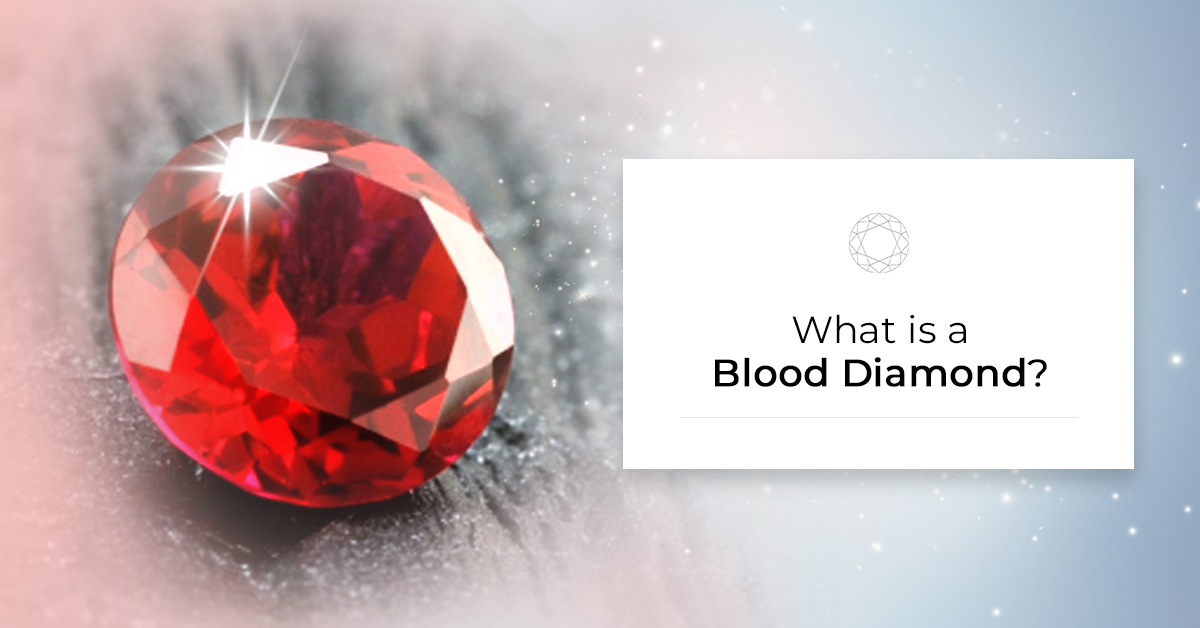
Diamonds are a symbol of love, strength, and beauty. But some diamonds come with a darker story: blood diamonds. Blood diamonds, or conflict diamonds, are used to fund war-torn areas controlled by rebel groups, often related to human rights abuse and violations.
This article explores in detail what blood diamonds are; where they originate from; why they are illegal; and how you can ensure they are not part of your purchase. Here’s everything you need to know about blood diamonds!
Sections in the Blog:
Why is a Diamond called a Blood Diamond?
Where do Blood Diamonds Originate from?
Are Conflict Diamonds Blood Diamonds?
Where are Blood Diamonds found?
What are Blood Diamonds Used for?
Importance of The Kimberley Process
The Kimberley Process Explained:
Are Blood Diamonds Illegal?
Do Blood Diamonds Exist in 2024?
Are Blood Diamonds Worth Anything?
Bottom Line
Key Takeaways
FAQs about what Blood Diamond is:
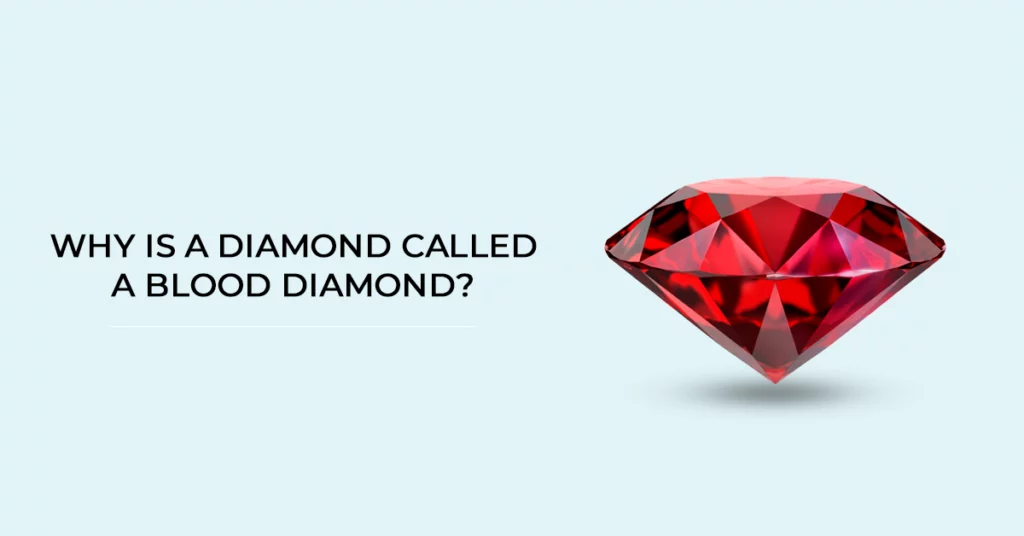
A diamond is called a blood diamond because they hold the dark reality of diamond mining. Blood diamonds are mined by rebel groups and sold to fund illegal activities that go against the legitimate government of the operating country.
The United Nations defines a blood diamond as any diamond that’s mined in areas controlled by forces opposing the legitimate government of a country. This means individuals who are not working voluntarily but are coerced into mining work for little or no pay under dangerous conditions with no legal protection. It’s estimated that around 15% of all global diamonds come from blood diamonds.

Blood diamonds usually originate from the 20th–21st-century civil wars in Angola, Ivory Coast, Sierra Leone, Liberia, Guinea, and Guinea-Bissau. In the 21st century one could call the diamonds coming out of Russia also as “blood diamonds”, as all the mines in Russia are owned by the state and it is claimed that they use the proceeds of these mines to fuel their war efforts in Ukraine. It’s essential to be aware of the origin of a diamond when purchasing it, as organizations are dedicated to ensuring that all diamonds on the market have been ethically sourced and certified.
Yes, conflict diamonds are also known as blood diamonds. They have been present in the African continent for decades and are different from other diamonds as their sale is related to human rights abuses and violence. Because of their unethical nature and practices, they are called conflict or blood diamonds.
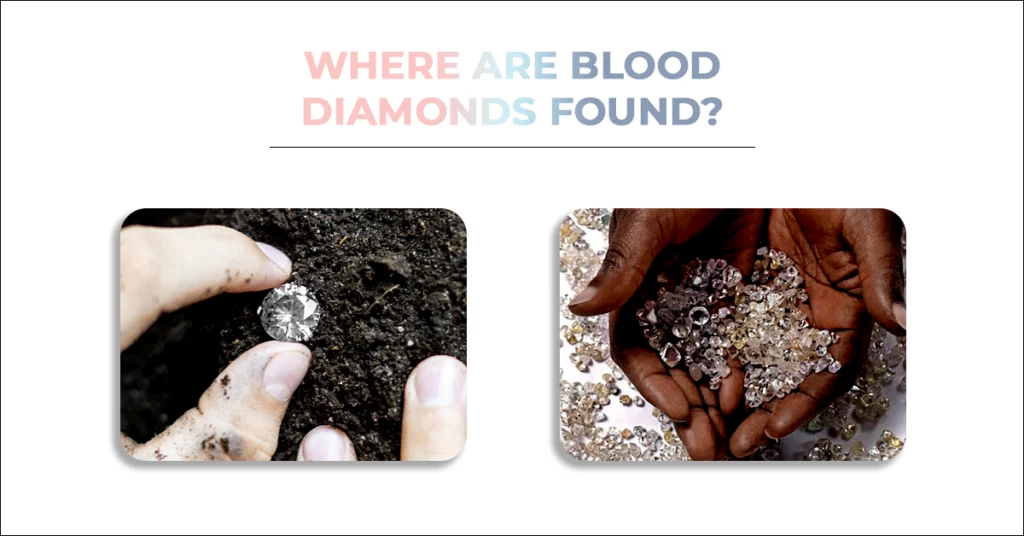
Blood diamonds, or conflict diamonds, are mined in areas controlled by rebel groups and illegally smuggled out for sale. These stones are often sold to innocent buyers with the proceeds to further rebel activities. Commonly sourced from Southern Africa, pink diamonds are also mined in Sierra Leone. Other countries where blood diamonds are sold include Angola, Central African Republic, Liberia, and the Democratic Republic of Congo, among others.
Blood diamonds are used to fund illicit activities regulated by rebel forces opposing the legitimate government. These gems are often sold to innocent buyers, and the sale is used to finance armed conflicts, including slavery, torture, murder, and human rights abuse.
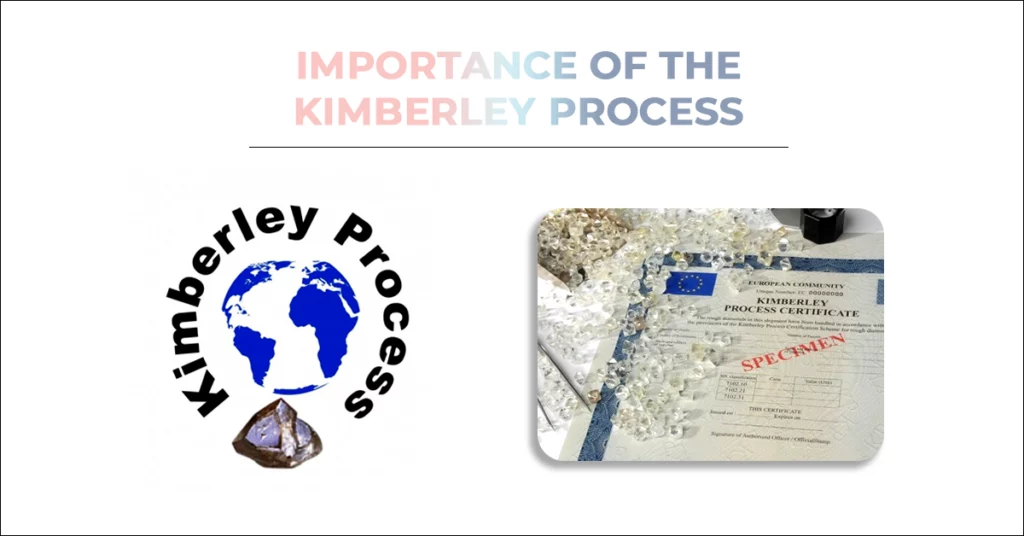
The Kimberley Process, founded in 2002, is an international certification scheme for rough diamonds which helps prevent conflict diamonds from entering global markets. Through this process, countries must certify that every shipment leaving their borders contains only “conflict-free” rough stones.
Buying a blood diamond not only supports these rebel groups but leaves people vulnerable to exploitation and abuse – something we should all strive to avoid at all costs. By being aware of where your diamond has come from, you can ensure it does not contribute towards unethical practices such as those discussed here.
The process involves three steps: country declaration, import/export controls, and internal control systems within each participating nation, which verifies the origin of all rough diamond exports. This system helps ensure that any exported stones are free from any connection to armed conflict or civil unrest.
Therefore, when purchasing a diamond, you must know its origin and ensure you buy ethically sourced stones certified by the Kimberley Process. Failing to do so not only supports rebel groups but puts people vulnerable to exploitation and abuse at risk. Organizations such as Global Witness work hard to protect those living in areas where conflict diamonds originate by monitoring their production and sale on an international level.
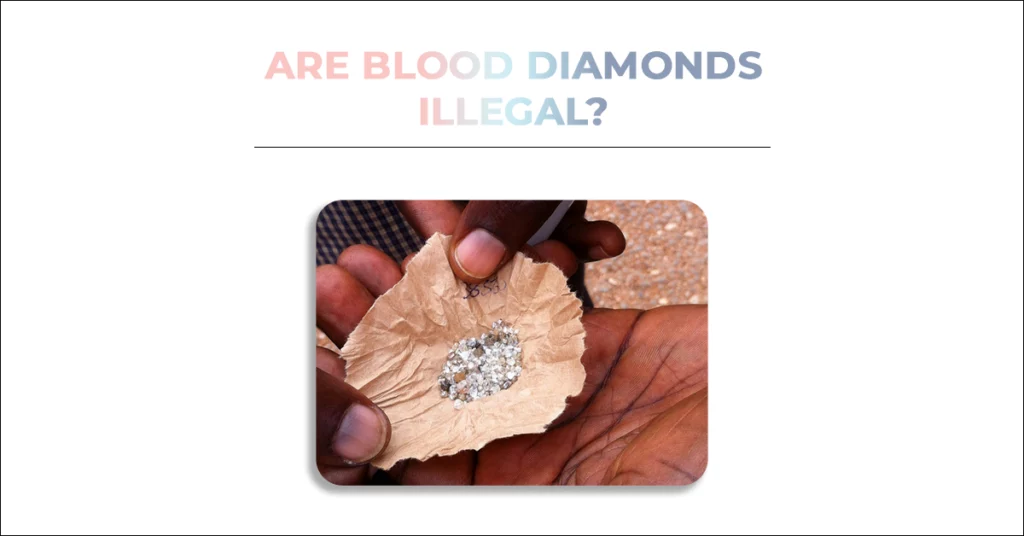
Yes, blood diamonds or conflict diamonds are mined and distributed illegally. Being typically sourced from Sierra Leone, Liberia, Angola, and other African countries, these diamonds aren’t certified and ethically sourced. Buyers need to research the origin of a diamond before making any purchase to ensure they aren’t contributing to human rights violations and abuse of any form.
Yes, blood diamonds still exist in 2024 – however, their exchange has been reduced significantly. The diamond industry has long been the subject of “blood diamonds” controversy. As we move to 2024 and beyond, it’s paramount to comprehend the potential for conflict diamonds still on the marketplace and how to identify them. While there’s no guarantee that any diamond is 100% conflict-free, it’s essential to ensure your purchase isn’t contributing to any form of violence or abuse in 2024.
The trade of illicit diamonds, or ‘blood’ diamonds, is estimated to be a US$1.6 billion per year global industry. The largest polished natural fancy red diamond on record is estimated to exceed $20 million – a staggering sum compared to the value of conflict diamonds.
The quality of blood diamonds is often lower than those sourced legally due to their illegal mining and trading practices, meaning they are more likely to be fake or synthetic – further decreasing their value. Besides, its lack of regulation makes it difficult for consumers to guarantee their origin and authenticity.
Any money spent on these diamonds will likely contribute toward unethical practices such as financing civil unrest or human rights violations. Consumers should opt for certified diamonds as part of an effort towards responsible sourcing and due diligence when shopping for precious stones.
In conclusion, both blood diamonds and conflict diamonds come from areas controlled by rebel forces who use the money made from selling them to fund their activities and perpetuate violence against civilians or other governments. Therefore, it is essential for buyers who purchase these gems —whether they’re aware or not—to know their origins and organizations dedicated to ensuring ethical sourcing.
Blood diamonds come primarily from African countries such as Sierra Leone, Angola, the Democratic Republic of Congo and Liberia.
The majority of the world’s diamonds come from sources that use the revenues generated by diamonds to aid their national development.So countries buy these diamonds.
Blood diamonds, also known as conflict diamonds, are diamonds that are mined in war zones and sold to finance armed conflicts against legitimate governments of the operating country and also they hold the dark reality of diamond mining
Blood or conflict diamonds are illegally mined minerals used to fund war-torn areas and cause immense suffering.
Blood diamonds are mostly found in Africa. Numerous states such as Angola, Liberia, Sierra Leone, and Zimbabwe have had blood diamonds collected within their respective countries during conflict.
Shop by metal
Shop by diamond
@ All rights reserved La Joya Jewelry Inc